#mediha sultan daughter of abdulmecid i
Photo


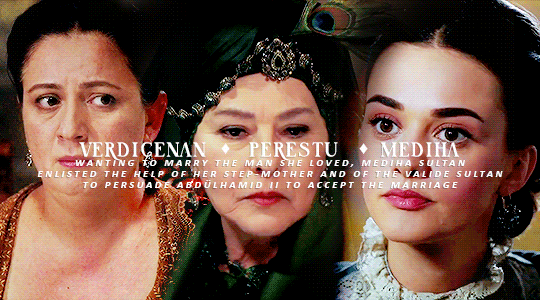


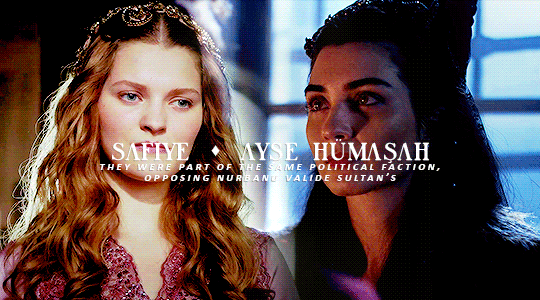

Alliances within the Ottoman Imperial harem -- requested by anon
#history#historyedit#ottoman history#safiye sultan#handan sultan#kosem sultan#halime sultan#emetullah rabia gulnus sultan#turhan hatice sultan#ayse humasah hanimsultan#verdicenan kadin#rahime perestu sultan#mediha sultan daughter of abdulmecid i#fatma sultan daughter of abdulmecid i#seniha sultan daughter of abdulmecid i#hibetullah sultan daughter of abdulhamid i#esma sultan daughter of abdulhamid i#ottomanladiesedit#*requested
327 notes
·
View notes
Photo





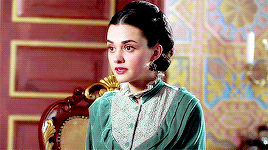
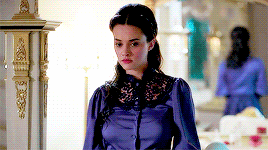

On this day in Ottoman history, 31 July, Mediha Sultan was born:
"Princess Mediha was fond of European ways. She dressed beautifully and with great dignity, appearing splendidly regal in her gowns with their long trains. She was petite with white skin and gorgeous black eyes, and she too resembled Sultan Abdülmecid. In manner she was gracious, attractive, and wonderfully kind. Everyone in the palace loved this princess. As did Princess Seniha, she too spoke laughingly, with an air of good humor in her voice." -- Ayşe Sultan in My father, Abdülhamid translated by Douglas Scott Brookes in The Concubine, the Princess, and the Teacher: Voices from the Ottoman Harem // Hande Soral as Mediha
#history#historyedit#ottoman history#on this day in ottoman history#mediha sultan daughter of abdulmecid i#ottomanladiesedit
227 notes
·
View notes
Note
I have a lot of interest rest in Ottomans. How fashion changed after 1860s in Ottoman women? Ottoman fashion which is shown in Payitaht Abdulhamid in 1890s, was it real? Please explain with pictures
I am sorry for the long wait, I had internet connection problems.
After 1860s is a very specific time but I'll do my best. We can't forget that talking about fashion in a setting like the Ottoman empire is way more difficult because women weren't supposed to be portrayed or photographed so the material is scarce.
It was after the visit of the Empress Eugénie that the women of the palace and the wives of the high functionaries copied as nearly as they could the appearance of the beautiful Empress. They divided their hair in the middle, and spent hours in making little bunches of curls. High-heeled shoes replaced the coloured babouches [slippers]; they even adopted the hideous crinolines and abandoned forever those charming Oriental garments, the chalvar and the entari which they considered symbols of servitude, but which no other fashion has been able to equal in beauty — Zeynoub Hanoum, A Turkish Woman’s European Impressions
The chalvar, called şalvar in Turkish are the characteristic baggy pants that women (and men too) would wear underneath their several layers of clothing. The entari was worn over the undergarments and the şalvar:

These are all XIX century entari.
In any case, rich women began to abandon these clothes for more European ones especially after the visit of Empress Eugénie in Istanbul. This can be seen clearly in children's fashion:

Nazima Sultan in 1876 and Naime Sultan in 1882
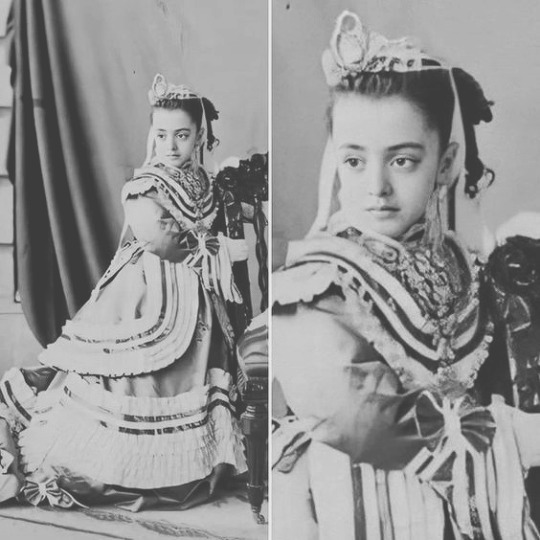
Saliha Sultan in the 1870s
In this period [1867], the young ladies and young girls had completely abandoned the old dresses with three tails or trains and the baggy pants underneath; fashion now demanded shirts with a single train which was caught up and attached to the belt – there were now petticoats instead of şalvars or the baggy pants previously worn. The headdresses had also changed with the times and now usually matched the costumes; there were earrings with jewels, medallions and elaborate hairstyles, garnished with precious stones. — Leyla (Saz) Hanımefendi, The Imperial Harem of the Sultans. Daily Life at the Çıragan Palace During the Nineteenth Century
As for outerwear:
Women changed the thicker cloth they had traditionally used for their feraces (long flowing outer garments) for a much thinner material. They changed their yellow boots of morocco leather for shoes with trimmings of imitation gold thread, which they wore with thin, white socks. They began to use thinner veils and they turned covering themselves into a method for making themselves more alluring, a trend appreciated by Ali Rıza Bey, who commented that ‘the veils of our women, which were a means of ornamenting the face rather than concealing it, became finer. How charming the colourful feraces looked! And these finer veils were unable to obscure the beauty [behind]’. — Ebru Boyar, Kate Fleet - A Social History of Ottoman Istanbul
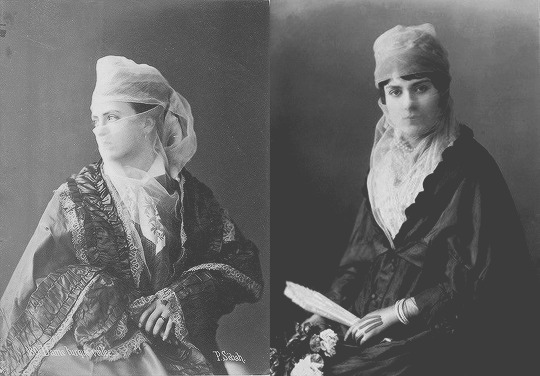
These photographs are great examples of just how fine veils had become. They basically did not hide any feature and this was a problem for conservatives (and sultans as well):
The çarşafs had become merely ordinary dresses, the feraces had turned into sleeveless capes, the veils had become too thin. [Abdülhamid II] issued an order that this should not occur. Further, women were not to wear coats or short, tight-waisted jackets which imitated military styles — Ebru Boyar, Kate Fleet - A Social History of Ottoman Istanbul

In the photograph above you can see a western dress underneath the ferace and several rows of what seem to be pearls.
In the XIX century, women (especially wealthy women of course) began to go out more, especially to pleasure gardens or at the Bosphorus shore. This meant that new accessories began to be used, among them the parasol. As pleasure gardens (ie. parks) were public places, men and women could see each other in these occasions:
A parasol in the rowing boat! It explains what the person wants to say. For example, if it is bent a little to one side, it means ‘I am annoyed with you’, if it is bent over further, ‘I am really angry’, if it completely covers the face, it means ‘you will not see my face again’, ‘I don’t want to see you, have you still not understood?’, if it swings hard from right to left, it signifies ‘don’t stay, pass by’, ‘return, go’, if it falls slightly to the front, it is in the place of a greeting, ‘welcome, sir’, if it falls a lot, ‘my heart has beaten again’, if it goes to the back, it means ‘oh!’, if it leans all the way over backwards, ‘what a state I am in, see me and have pity!’, if it is held to the side, ‘oh, how fine, what happiness this is!’, if it is opened and closed, it means ‘not tonight, tomorrow’, if it is closed and stays so, ‘we will make an appointment for the following day — Ebru Boyar, Kate Fleet - A Social History of Ottoman Istanbul
Men too had secret gestures:
making signs with the eyes and eyebrows, winking one eye, making as if wiping your face with a handkerchief, smelling the handkerchief with which you have just wiped your face, sighing deeply, and placing your hand over your heart. Placing your hand on your temple and half-closing then closing your eyes means ‘I am dying for you’, unbuttoning of one or two buttons of the waistcoat means ‘my heart is palpitating, I cannot bear this beating’. If you have a cigarette in your mouth, even if it is newly lit, and you take it from the corner of your mouth and hurl it away, this is because women do not like addiction to tobacco any more than its smell. To call over a beggar and give him a few coins demonstrates your compassion and generosity. To be busy looking at the posters outside Manakyan’s theatre is a sign of liking romantic themes such as La Dame aux camelias or Countess Sara. — Sermet Muhtar Alus, 30 Sene Evvel İstanbul. 1900’lü Yılların Başlarında Şehir Hayatı
... clothing made in European fashion, top hats, fancy canes, pet dogs, piano lessons, French language lessons, operas, dances, and balls, to the eventual employment of Western literary forms such as the novel, short story, and newspaper and the print culture it introduced, which had profound effects in creating new visions of Ottoman society and the individuals living within it. These literary forms constructed a new image of an Ottoman as a refined man "introverted, very sensitive, knowledgeable in Western music and literature, conversant in a Western language, positivist, attributing value to human beings, and subscribing to a Western style of life" — Fatma Müge Göçek, Rise of the Bourgeoisie, Demise of Empire; Ottoman Westernization and Social Change
Of course the same craze invested the Palace. Sisters Fatma and Mediha are clearly wearing European gowns and accessories:

Fatma Sultan around 1870 and Mediha Sultan in 1888
In the photograph below we can see Refia Sultan dressed exactly like a European woman in 1865. 1865 is very early but she was very interested in everything that came from Europe.

I was not able to identify these people but they're clearly from the Ottoman empire:

the lady is particularly interesting because not only is she wearing a European-style tiara but she seems to be also wearing the Order of the Charity (the white sash) 1st class, which was usually awarded to princesses.
Here we have sisters Hatice, Fehime and Fatma (all daughters of Murad V). The European style of their clothes and accessories is pretty evident.
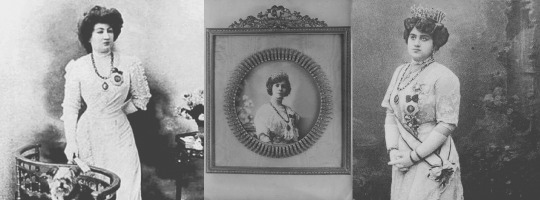

Rukiye Sabiha Sultan on her wedding day in 1921
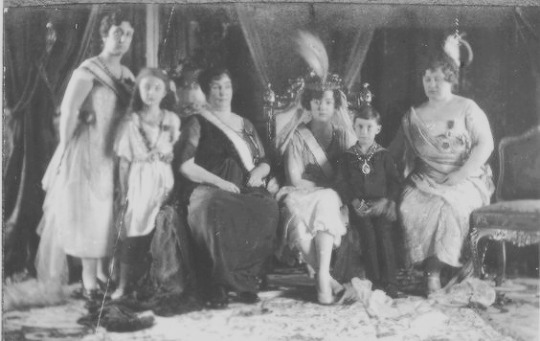
other photo of Rukiye Sabiha Sultan’s wedding
So... yeah, by the fall of the empire clothes were completely European.
#anon#ask post#ask: ottoman history#ottoman fashion#ottoman photos#late ottoman empire#nazima sultan daughter of abdulaziz#naime sultan daughter of abdulhamid ii#saliha sultan daughter of abdulaziz#fatma sultan daughter of abdulmecid i#mediha sultan daughter of abdulmecid i#refia sultan daughter of abdulmecid i#hatice sultan daughter of murad v#fehime sultan daughter of murad v#fatma sultan daughter of murad v#rukiye sabiha sultan daughter of mehmed vi
189 notes
·
View notes
Photo


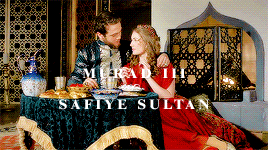
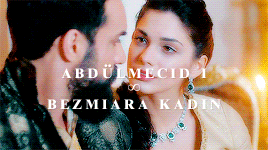
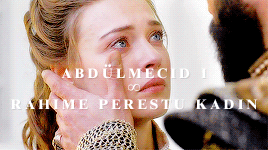
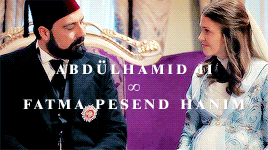
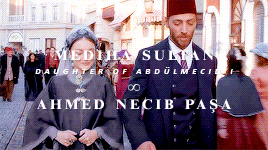



OTTOMANLADIES’ 2ND BIRTHDAY CELEBRATIONS
(some) marriages for love* in the ottoman dynasty – requested by anon
*one-sided or not
#history#historyedit#ottoman history#haseki hurrem sultan#suleyman i#selim ii#nurbanu sultan#murad iii#safiye sultan#abdulmecid i#bezmiara kadin#rahime perestu sultan#ayse sultan daughter of abdulhamid ii#abdulhamid ii#fatma pesend hanim#fehime sultan daughter of murad v#hatice sultan daughter of murad v#mediha sultan daughter of abdulmecid i#ottomanladiesedit#*requested
329 notes
·
View notes
Note
The youngest Ottoman princess to become a mother?
The problem is sometimes we don't have exact dates of births so it is quite difficult to say. Nevertheless, this is what I have found:
Selçuk Sultan, daughter of Bayezid II: her first child, Sultân-zâde Gaazî Husrev Bey/Paşa, seems to have been born when she was fifteen
Fatma Sultan, daughter of Selim II: her first (?) child, Sultân-zâde Ahmed Bey, seems to have been born when she was fifteen
Gevherhan Sultan, daughter of Ahmed I: if we believe 1608 to have been her date of birth, it seems that she had a child at the age of 12. Taking into consideration the whole trend, twelve seems to be a little too early even for a princess.
Hatice Sultan, daughter of Mehmed IV: her first child, Sultân-zâde Mehmed Bey, seems to have been born when she was sixteen.
Fatma Sultan, daughter of Ahmed III: her only (?) child, Sultân-zâde Mehmed Bey, seems to have been born when she was fourteen
Saliha Sultan, daughter of Ahmed III: her first child, Sultân-zâde Ahmed Bey, seems to have been born when she was fourteen
Ayşe Dürrüşehvar Hanım, daughter of Abdülhamid I: her first daughter, Atıyyetullâh Hanım, seems to have been born when she was around fifteen
Fatma Sultan, daughter of Abdülmecid I: her first child, Cemile Hanım-Sultân, was born when she was fifteen.
Mediha Sultan, daughter of Abdülmecid I: her only child, Sultân-zâde 'Abdurrahmân Sâmî Beyefendi, was born when she was fifteen
Without considering Gevherhan Sultan, which seems an anomaly but also could be the result of wrong information, it seems that the earliest that princesses gave birth was at the age of fourteen. Of course, we don’t have all the dates so there could have been earlier births.
#anon#ask post#ask: ottoman history#selcuk sultan daughter of bayezid ii#fatma sultan daughter of selim ii#gevherhan sultan daughter of ahmed i#hatice sultan daughter of mehmed iv#saliha sultan daughter of ahmed iii#fatma sultan daughter of ahmed iii#ayse durrusehvar hanim daughter of abdulhamid i#fatma sultan daughter of abdulmecid i#mediha sultan daughter of abdulmecid i#Anonymous
19 notes
·
View notes
Note
Is there any Ottoman princess who still has descendants today.
Hello, sure! I'm going to list them using the "Genealogy of the Ottoman Empire" published in 2005 as source, as it's the most recent genealogy work I have.
descendants of Mediha Sultan, daughter of Abdülmecid I
Leila Mediha Samy (b. 5.10.1955): great-granddaughter. She has a son called Henry Orhan Samy Beggin (b. 21.9.1991)
Mustafa Reshid Sami (b. 12.11.1952): great-grandson. He has a daughter called Zoe-Jo Sami (b. 23.4.1994)
Ekrem Abdurrahman Sami (b. 2.9.1954): great-grandson. He has two children: Rebecca Anne Sami (b. 7.12.1982) and Ömer Ryan Sami (b. 2.4.1993)
Catherine Melek Samy (b. 28.1.1960): great-granddaughter. She has two children: India Holy Samy-Lewis (b. 29.12.1998) and Anouchka Sky Evyleen Samy-Lewis (b. 16.6.2000)
descendants of Cemile Sultan, daughter of Abdülmecid I
Naile (b. 1912): great-granddaughter. I'm not sure she's still alive but she has two children: Engin (b. 1933) and Sevil (b. 1942)
Behremend (b. 1917): great-granddaughter. Again, I'm not sure she's still alive but she has a daughter: Gülnûr Sertel (b. 1955) who, in turn, has a son, Kenan (b. 1973)
Bilge (b. 1933): great-great-granddaughter. I'm not sure she's still alive.
Fatma Nühbe Çubukçu (b. 1949): great-great-granddaughter.
Fuad Bengü (b. 24.8.1948): great-great-grandson
Dogan Bengü (b. 5.5.1959): great-great-grandson
Arzu Bengü (b. 9.11.1969): great-great-granddaughter
Edhem Dömeke (b. 22.5.1933): great-grandson. He has two daughters: Ayşe Dömeke (b. 1971) and Aylin Dömeke (b. 1976)
descendants of Esma Sultan, daughter of Abdülaziz Han
Alp Saadeddine Mohamed Bey Osmansoy (b. 1930): grandson. He has three children: Orhan Saadeddine Osmansoy (b. 1969), Shirine Mohamed Bey (b. 1970) who in turn has a son, Kamil Mahmoud Faour (b. 1999); Ayline Mohamed Bey (b. 1976)
Kaya Mohamed Bey Osmansoy (b. 1937): grandson.
Aydin Mohamed Bey Osmansoy (b. 1947): grandson
descendants of Hatice Sultan, daughter of Murad V
Kenize Mourad de Kotwara (b. 1940): granddaughter
descendants of Fatma Sultan, daughter of Murad V
Resan Iris (b. 15.11.1956): granddaughter. She has two children: Serra Deveci (b. 19.3.1979) and Emirhan Deveci (b. 23.3.1991)
descendants of Zekiye Sultan, daughter of Abdülhamid II
Fatma Yasemin Yegen (b. 18.9.1973): great-granddaughter
Muhsin Osman Yegen (b. 14.12.1977): great-grandson
descendants of Naime Sultan, daughter of Abdülhamid II
Bülent Ossmann (b. 2.5.1930): grandson. He has a son, Rémy Chengiz Ossmann (b. 16.11.1963) who, in turn, has a son: Sélim Ossmann (b. 14.12.1992)
Koubilay (b. 1937): grandson. He has three children: Shehnaz (b. 1970), Inci (b. 1972) and Orhan (b. 1975)
descendants of Ayşe Sultan, daughter of Abdülhamid II
Ayşe Rebia Nami (b. 3.8.1945): granddaughter.
Mediha Şükriye Nami Osmanoğlu (b. 24.5.1947): granddaughter. She has a daughter: Ayşe Marie-Christine Nami-Conopio (b. 16.7.1969)
Fethiye Nimet Nami Osmanoğlu (b. 21.3.1953): granddaughter.
Ayşe Adile Nami Osmanoğlu (b. 6.8.1958): granddaughter. She has two children: Osman Necati Ferhat Ariba (b. 31.1.1980) and Ayşe Feyzan Ariba (b. 9.9.1983)
Gul Nür Dorothée Nami Osmanoğlu (b. 10.1.1960): granddaughter. She has three children: Hanzade Audrey Nami-Ragot (b. 4.2.1988), Ayzade Maylis Nami-Ragot (b. 16.6.1991) and Aléxis Cem Nami-Ragot (b. 11.3.1993)
Ayten Sofia Nami Osmanoğlu (b. 24.3.1961): granddaughter. She has a daughter: Refia Roksan Kunter (b. 10.8.1984)
descendants of Fatma Ulviye Sultan, daughter of Mehmed VI
Ismail Halim Özba (b. 6.10.1945): grandson. He has two children: Nadia Özba (b. 1969) and Halil Özba (b. 1974)
Hanzade Özba (b. 4.10.1953): granddaughter. She has two chidren: Neslişah Evliyazade (b. 1977) and Mesude Evliyazade (b. 1978)
descendants of Rukiye Sabiha Sultan, daughter of Mehmed VI
Prince Abbas Hilmi of Egypt (b. 16.10.1941): grandson. He has two children: Fatma Sabiha Hilmi (b. 28.9.1974) and Daoud Abd El Moneim Hilmi (b. 23.6.1979)
Princess Ikbal of Egypt (b. 22.12.1944): granddaughter
Princess Sabiha Fazile Ibrahim of Egypt (b. 8.8.1941): granddaughter. She has two sons: Ali-Suad Ürgüplü (b. 28.9.1967) and Mehmed-Selim Ürgüplü (b. 31.10.1968)
Prince Ahmed Rifat Ibrahim of Egypt (b. 31.8.1942): grandson
Prince Osman Rifat Ibrahim (b. 20.5.1951): grandson
#anon#ask post#ask: ottoman history#mediha sultan daughter of abdulmecid i#cemile sultan daughter of abdulmecid i#esma sultan daughter of abdulaziz#hatice sultan daughter of murad v#fatma sultan daughter of murad v#zekiye sultan daughter of abdulhamid ii#naime sultan daughter of abdulhamid ii#ayse sultan daughter of abdulhamid ii#fatma ulviye sultan daughter of mehmed vi#rukiye sabiha sultan daughter of mehmed vi#Anonymous
18 notes
·
View notes
Note
Can you list some information about Abdulmecid I’s children with some information about them just like you did for Ahmed III harem + children.
Sorry for the long wait but... the guy had 42 children
Mevhibe Sultan (1840-1841), with Hoşyar Kadın: lived for only 8 months, was buried in the Hamidiye Mausoleum
Sultan V. Murad Han (1840-1904), with Şevkefza Valide Sultan: 33rd Ottoman sultan, he reigned for only 93 days, after which he was deposed on the grounds of "perpetual insanity"
Naime Sultan (1840-1843), with Tirimüjgan Kadın: Abdülhamid II's elder sister, she died of smallpox
Fatma Sultan (1840-1884), with Gülcemal Kadın: Mehmed V's eldest sister and Murad V's favourite sister. She had two husbands: Dâmâd'Alî Gaalib Paşa and Dâmâd Mehmed Nûrî Paşa, which she outlived. Her three children died in infancy and she spent the last years of her life confined in her villa in Istanbul because she had tried to reinstate Murad V on the throne. She died at the age of 44 and was buried in Murad V's mausoleum.
Behiye Sultan (1841-1847), mother unknown: she died at the age of 6 and was buried in the mausoleum of Refia Sultan. Her mother was "Her Highness, the Second Ikbal"
Neyyire Sultan (1841-1843), with Şayeste Hanım: she died at the age of 3 and was buried in the Nurosmaniye Mosque.
Refia Sultan (1842-1880), with Gülcemal Kadın: Mehmed V's elder sister. She was married to Dâmâd Mahmûd Edham Paşâ and had a daughter with him. Refia was extremely educated, like her sisters, as her father had insisted for them to be educated both in traditional and western subjects. Contrary to her younger sister Cemile, whom her father constantly lauded, Refia was a true spendthrift and her debts were staggering for just one person.
Hatice Sultan (1842-1842), with Gülcemal Kadın
Sultan II. Abdülhamid Han (1842-1918), with Tirimüjgan Kadın: 34th Ottoman Sultan, he was deposed by the Young Turks in 1909 and exiled to Thessalonika. None of his sons would ascend the throne.
Aliye Sultan (1842-1845), with Şevkefza Valide Sultan: younger sister of Murad V, she was 2 when she died and was buried in the New Mosque
Mehmed Ziyaeddin Efendi (1842-1845), with Nesrin Hanım:
Cemile Sultan (1843-1915), with Düzdidil Hanım: her mother died when she was 3, so she was raised by Rahime Perestu, future Valide Sultan. She was therefore very close to her older brother Abdülhamid II, who had been raised by Rahime Perestu as well. She married Dâmâd Mahmûd Celaleddîn Paşa in 1858, when she was fifteen. Her husband was the second son of Dâmâd Ahmed Fethî Paşa (husband of Mahmud II's daughter, Atiye Sultan) from his first wife. Fındıklı Palace was built for them. Together they had 6 children: Fethiye Hanım-Sultân (1859 - 1887), Sultân-zâde Besim Beyefendi (died at the age of 2), Sultân-zâde Sâkıb Beyefendi (1864 - 1897), Sultân-zâde Mehmed Mahmûd Celâleddîn Beyefendi (1864 - 1916), 'Ayşe Şıdıka Hanım-Sultân (1875 - 1937?), Fatma Hanım-Sultân (1879 - 1890)
Sultan V. Mehmed Reşad Han (1844-1918), with Gülcemal Kadın: 35th Ottoman Sultan, he was enthroned by the Young Turks after the deposition of Abdülhamid II and was the last sultan to die in office.
Münire Sultan (1844-1862), with Verdicenan Kadın: she firstly married the son of the Egyptian Khedive, İbrahim İlhami Paşa, and the costly wedding ceremony attracted a lot of criticism because the Imperial Army had just been defeated in Montenegro. The marriage lasted only two years, as İbrahim İlhami Paşa died at only 24 years old. She therefore married Lieutenant General Dâmâd İbrahim Paşa, with whom she had a son: Sultân-zâde 'Alâeddîn Beyefendi (1861 - 1915?). She was buried in the mausoleum of her great-grandmother, Nakşıdil Valide Sultan.
Samiye Sultan (1845-1845), mother unknown: she was buried in the New Mosque. Her mother had been listed as "Her Highness, the Third Kadinefendi"
Ahmed Efendi (1846-1846), with Nükhetseza Hanım: he was buried in the New Mosque inside the mausoleum of Refia Sultan
Fatma Nazime Sultan (1847-1847), mother unknown: she was buried in the mausoleum of Refia Sultan
Sabiha Sultan (1848-1849), with Mehtab Kadın: she was buried in the mausoleum of Refia Sultan
Mehmed Abid Efendi (1848-1848), with Tirimüjgan Kadın: he was buried in the mausoleum of Refia Sultan
Ahmed Kemaleddin Efendi (1848-1905), with Verdicenan Kadın: he was a supporter of Murad V's rights to the throne and was in a bad relationship with her other older brother, Abdulhamid II. He married his only consort, Fatma Sezâ-dil Hanımefendi, in 1876, and had two daughters with her: Atiyetullah Sultan (1878-1878) and Münire Sultan (1880-1939). His daughter married Dâmâd Mehmed Sâlih Paşa in 1907 and had a son, Sultân-zâde Ahmed Kemâleddîn (Keredin) Beyefendi (1908-1987), clearly named after her father.
Atiyetullah Efendi (?-?)
Mehmed Fuad Efendi (died in infancy), with Nergizu Hanım: he was buried in the mausoleum of Refia Sultan
Behice Sultan (1848-1876), with Nesrin Hanım: she lost her mother at the age of 3 and contracted tuberculosis in childhood. She lived secluded all her life and her sisters Refia and Seniha always sent her letters to cheer her up, even though they knew that Behice's illness had reached the final stage by the time she had turned 20. In her letters, Behice came across as frustrated, jealous of her sisters' freedom and extremely sensitive. Her dowry had been prepared by her father but her illness always prevented her from getting married, even though that was her dream. Finally, her uncle Abdülaziz consented, and Behice married Dâmâd Halil Hamîd Beyefendi on 16 November 1876. Unfortunately, the princess died just 20 days later at the age of 28. She was buried in the mausoleum of Münire Sultan.
Mehmed Burhaneddin Efendi (1849-1876), with Nükhetseza Hanım: he was Abdülhamîd II's favourite brother, who also named a warship after him. He had two consorts: Mest-i Niyâz Hanımefendi and Şâd-rûy Hanımefendi. From his first consort, he had an unnamed daughter (1876? -1890?) and Ibrahim Tevfik Efendi (1874-1931). He was buried in the mausoleum of his father Abdülmecid
Rukiye Sultan (1850-1850), with Gülcemal Kadın:
Mukbile Sultan (1850-1850), mother unknown: buried in the mausoleum of Refia Sultan, her mother had been listed as "Her Highness, the Fourth Ikbal"
Mehmed Vamık Efendi (1850-1850), mother unknown: buried in the mausoleum of Refia Sultan
Nizameddin Efendi (1850-1853), with Nesrin Hanım: twin of Bahaeddin Efendi, he was buried in the mausoleum of Murad V
Bahaeddin Efendi (1850-1852), with Nesrin Hanım: twin of Nizameddin Efendi, he was buried in the mausoleum of Refia Sultan
Ahmed Nureddin Efendi (1852-1885), with Mehtab Kadın: he had two consorts, Nazlı Emşâl Hanımefendi and an unnamed one, but no children. He died at the age of 33 and was buried in the mausoleum of Murad V
Mehmed Rüşdü Efendi (1852-1852), with Ceylanyar Hanım: buried in the Hamidiye Tomb.
Osman Safiyeddin Efendi (1852-1855), with Ayşe Serfiraz Hanım: buried in the mausoleum of Abdülmecid I
Seniha Sultan (1853-1931), with Nalandil Hanım: she married Dâmâd Âsaf Mahmûd Celaleddîn Paşa (the son of Dâmâd Halil Rifat Paşa after the death of Saliha Sultan, daughter of Mahmud II) in 1877. Celaleddîn Paşa wasn't particularly trusted by Abdülhamid II but was nevertheless appointed vizier. Seniha and her husband participated in the Ali Suavi Incident, actually a conspiracy to dethrone Abdulhamid II and re-instate Murad V, the failure of which - among other things - prompted Celaleddîn Paşa to leave the Ottoman empire and settle in Bruxelles. Together, they had two sons: Sultân-zâde Mehmed Sabâhaddîn Beyefendi (1877-1948) and Sultân-zâde Ahmed Lutfullâh Beyfendi (1880-1973). Her son Sabâhaddîn was a vocal critic of Abdülhamid II's regime and was actually the leader of a faction inside the Young Turks movement which advocated some of the same liberal principles of the CUP but instead favoured administrative decentralization and European assistance. At the time of the Dynasty's exile from Turkey, Seniha Sultan was the eldest princess alive. She lived with Mehmed VI in Sanremo until his death, then moved to Nice, where the last Caliph Abdülmecid II had settled down but was not in favour because she was part of the "Mecid branch" of the family. She spent her last years bedridden in a room inside the caliph's villa and Nice and died there in 1931. She was buried in the Sultan Selim Mosque in Damascus.
Abdullah Efendi (1853-1853), with Şayeste Hanım: stillborn
Mehmed Abdüssamed Efendi (1853-1855), with Nalandil Hanım: buried in the mausoleum of his father
Zekiye Sultan (1855-1856), with Gülistu Kadın: twin of Fehime Sultan, was buried in the mausoleum of Münîre Sultân
Fehime Sultan (1855-1856), with Gülistu Kadın: twin of Fehime Sultan, was buried in the mausoleum of Münîre Sultân
Mediha Sultan (1856-1928), with Gülistu Kadın: elder sister of Mehmed VI, she fell in love with the son of Sâmi Paşa and started corresponding with him. When Abdülhamid II found out, he sent Necib Bey at the embassy in Paris. Mediha was devastated: she would not drink, eat or sleep. Her step-mother Verdicenan asked Rahime Perestu Valide Sultan's help, and together they were able to convince Abdülhamid to let the princess marry Necib Bey, which she did in 1879. Mediha had a son with him, Sultân-zâde 'Abdurrahmân Sâmî Beyefendi (1880-1961), but her happiness was short-lived: her husband died in 1885 at the age of 29. In 1886, she married her second husband, Dâmâd Mehmed Ferîd Paşa, but had no children with him.
Naile Sultan (1856-1882), with Şayeste Hanım: she married Dâmâd Çerkes Kabasakâl Mehmed Paşa who, according to Ayşe Osmanoğlu, was a brother of Abdülhamid II's consort Bidar Kadın. They had no children. She was buried in the mausoleum of Murad V
Bedia Sultan (1857-1858), with Ayşe Serfiraz Hanım: she was buried in the mausoleum of Münîre Sultân.
Selim Süleyman Efendi (1860-1909), with Ayşe Serfiraz Hanım: he had 5 consorts: Filiz-san Hanımefendi, Emîne Câvidân Hanımefendi, Fatma ikbâl Hanımefendi, 'Ayşe Tarz-ı ter (Tarz-ender) Hanımefendi and Zât-ı Melek Hanımefendi. His children were: Mehmed 'Abdülhalîm Efendi (1894-1926), Emine Naciye Sultan (1896-1961), and Damad Mehmed Şerefeddin Efendi (1904-1966)
Sultan VI. Mehmed Vahideddin Han (1861-1926), with Gülistu Kadın: last sultan of the Ottoman Empire, he was deposed in 1922 when the Republic of Turkey was proclaimed and exiled in 1924. He died in Sanremo, Italy
#anon#ask post#ask: ottoman history#abdulmecid i#murad v#abdulhamid ii#mehmed v#mehmed vi#fatma sultan daughter of abdulmecid i#refia sultan daughter of abdulmecid i#cemile sultan daughter of abdulmecid i#munire sultan daughter of abdulmecid i#sehzade ahmed kemaleddin son of abdulmecid i#behice sultan daughter of abdulmecid i#sehzade mehmed burhaneddin son of abdulmecid i#seniha sultan daughter of abdulmecid i#mediha sultan daughter of abdulmecid i#naile sultan daughter of abdulmecid i#sehzade selim suleyman son of abdulmecid i
21 notes
·
View notes
Photo
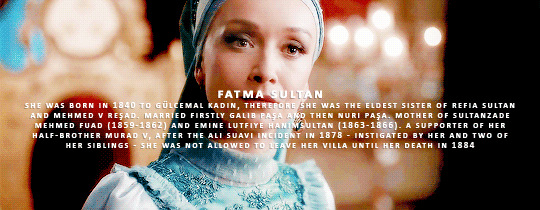

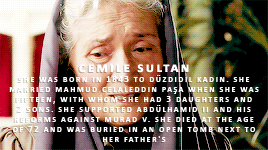
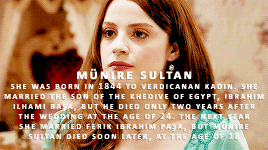

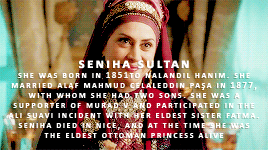
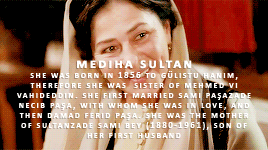
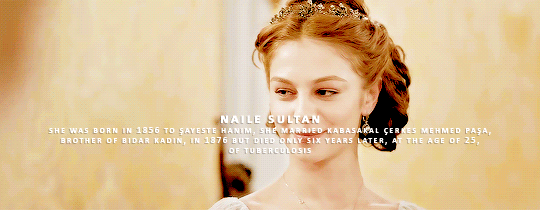
Abdülmecid I of the Ottoman Empire + daughters who survived infancy
#history#historyedit#ottoman history#abdulmecid#fatma sultan daughter of abdulmecid i#refia sultan daughter of abdulmecid i#cemile sultan daughter of abdulmecid i#munire sultan daughter of abdulmecid i#behice sultan daughter of abdulmecid i#seniha sultan daughter of abdulmecid i#mediha sultan daughter of abdulmecid i#naile sultan daughter of abdulmecid i#ottomanladiesedit#daughtersof#so... yeah... i thought they were seven....#i don't know how to count yep#late ottoman empire
878 notes
·
View notes
Text
On this day, 30 July, in Ottoman history
30 July 1777 - birth of Ayşe Sultan: daughter of Abdülhamid I, she only lived for 54 days. She was buried in the Yeni Mosque.
30 July 1856 - birth of Mediha Sultan: daughter of Sultan Abdülmecid and Gülistu Hamın, she was thus full sister to the last Ottoman Sultan, Mehmed VI Vahideddin. Her mother died before she was five and her father died a month later so her uncle, Sultan Abdülaziz, gave her to Verdicanan Kadınefendi to be raised. Her niece Ayşe Sultan, daughter of Abdülhamid II, described her like this in her memoirs: “Princess Mediha was fond of European ways. She dressed beautifully and with great dignity, appearing splendidly regal in her gowns with their long trains. She was petite with white skin and gorgeous black eyes, and she too resembled Sultan Abdülmecid. In manner she was gracious, attractive, and wonderfully kind. Everyone in the palace loved this princess. As did Princess Seniha, she too spoke laughingly, with an air of good humor in her voice”. Mediha Sultan fell in love with Necib Bey, son of Vizier Sami Paşa, and they exchanged letters until gossip started spreading and Abdülhamid II sent the young man to the embassy in Paris. Mediha stopped eating, drinking and sleeping out of sorrow. Her step-mother Verdicanan asked Rahime Perestü Valide Sultan for help and together, all three tried to convince the sultan to let the princess marry Necib Bey. In the end, Abdülhamid II relented and the two were married in 1879 after Necib Bey was elevated to the rank of paşa. The couple settled in Teşvikiye, where their only child, Sultanzade Sami Bey, was born in 1880. Unfortunately, the Paşa died in 1885, at the age of 30. Mediha Sultan married Damad Ferid Paşa a year later, who would later rise to the rank of Grand Vizier during the reign of her brother Vahideddin. In 1922 they left Turkey and settled in Nice, where Ferid Paşa died. Mediha thus moved first to Menton then to Sanremo, where she would visit her brother. Her son Sami Bey refused to take care of her and, when she died on 9 November 1928, he did not even bother to show up for the funeral. Mediha Sultan was buried in Nice.
#history#ottoman history#on this day in history#on this day in ottoman history#abdulhamid i#mediha sultan daughter of abdulmecid i#late ottoman empire
14 notes
·
View notes
Note
Hello,could you list some of Mahmud ll’s granddaughters.
Hello! I have listed all the granddaughters in case someone else wants to know about more of them.
by Saliha Sultan:
Ayşe Sıdıka Hanımsultan (1821 – 1886), who married Server Paşa, son of Saîd Server Efendi.
by Atiye Sultan:
Seniyye Hanımsultan (3.10.1843 – 10.12.1910), who married Hüseyin Hüsnî Paşa, son of Sırkâtibizâde Mustafa Paşa.
Feride Hanımsultan (30.5.1847 – 1.1913), who married Mahmûd Nedîm Paşa and, with him, had Mehmed Sâib Bey (1861 – 28.11.1871)
by Adile Sultan:
Sıdıka Hanımsultan, died in infancy
Aliyye Hanımsultan, died in infancy
Hayriye Hanım-Sultân (6.1846 – 26.7.1869), who married Ahmed Rifat Bey later Paşa
by Sultan Abdülmecid:
Mevhibe Sultan (9/31.5.1840 - 3.11.1840/9.2.1841), daughter of Huşyar Kadınefendi
Naime Sultan (11.10.1840 - 1.5.1843), daughter of Tirimüjgan Kadınefendi and thus full sister of Abdülhamid II.
Fatma Sultan (1.11.1840 - 26.8.1884), daughter of Gülcemal Kadınefendi and thus full sister of Refia Sultan and Sultan Mehmed V Reşad. She firstly married Galib Paşa, who drowned at sea, and secondly Mehmed Nuri Paşa, with whom she had: Mehmed Fuad (1859-1862) and Emine Lutfiye Hanımsultan (1863-1866)
Behiye Sultan (22.2.1841 - 3.6.1847) her mother is listed as the Second Ikbal but no name was given.
Neyyire Sultan (13.10.1841 - 14.1.1844)
Hatice (?) Refia Sultan (7.2.1842 - 4.1.1880), daughter of Gülcemal Kadınefendi, she married Mahmud Edhem Bey (son of the above mentioned Adile Sultan's husband Mehmed Ali Paşa, from a previous wife)
Aliyye Sultan (20.10.1842 - 23.7.1844/10.7.1845), possibly daughter of Şevkefza, later Valide Sultan, and thus full sister of Murad V
Cemile Sultan (17.8.1843 - 26.2.1915), daughter of Düzdidil Kadınefendi, she married Mahmud Celaleddin Bey later Paşa with whom she had: Fethiye Hanımsultan (1887-1915), Fatıma Hanımsultan (1890-1901), Sakıp Bey (1897-1930), Mehmed Celaleddin Bey (maybe twin of Sakıp Bey, 1897-1916)
Münire Sultan (9.12.1844 - 29.6.1862), daughter of Verdicanan Kadınefendi, she married firstly İbrahim İlhami Paşa and secondly Ferik (lieutenant general) İbrahim Paşa
Samiye Sultan (23.2.1845 - 15.4.1845)
Nazime Sultan (26.11.1847 - 1.12.1847)
Sabiha Sultan (15.4.1848 - 27.4.1849), daughter of Mahitab Hanım
Behice Sultan (26.8.1848 - 30.11.1876), daughter of Nesrin Hamın, she married Halil Hamid Paşazade Hamid Bey but died only 14 days after the wedding.
Mukbile Sultan (9.2.1850 - 25.2.1850), daughter of the Fourth Ikbal, no name was given.
Seniha Sultan (5.12.1851 - 15.9.1931), daughter of Nalandil Hanım, she married Mahmud Celaleddin Paşa, with whom she had: "Prince" Sabahaddin Bey (1877-1948) and Sultanzade Lütfullah Bey (1880-1973). Sabahaddin Bey was called "the Prince" in Europe.
Zekiye Sultan (26.1.1855 - 19.2.1856), twin sister of Fehime Sultan
Fehime Sultan (26.1.1855 - 10.11.1856), twin sister of Zekiye Sultan
Şehime Sultan (1.3.1855 - 21.5.1857), daughter of Senior Ikbal Nalandil.
Mediha Sultan (30.7.1856 - 7/9.11.1928), daughter of Gülistu Hamın and thus full sister of Mehmed VI Vahideddin. She married firstly Sami Paşa-zade Necip Bey later Paşa and secondly Damat Ferid Paşa.
Naile Sultan (30.9.1856 - 7/18.1.1882), daughter of Şayeste Hanım, she married Kabasakal Çerkes Mehmed Paşa but died at the age of 25.
Bedia/Bedihe Sultan (30.9.1857 - 12.7.1858), daughter of Serfiraz Hanım
By Sultan Abdülaziz:
Saliha Sultan (10.8.1862 - 1941?), daughter of Dürrinev Başkadınefendi and younger sister of Şehzade Yusuf İzzeddin Efendi. "She was engaged to a son of Khedive Ismail of Egypt, but the engagement was broken off after her father’s deposal and in April 1889 she married Ahmed Zülküfil Paşa". Her only child was Kâmile Hanım Sultan, who died in 1896.
Nazima Sultan (26.2.1866 - 26.11.1895), daughter of Hayranıdil Kadın, she married Ali Halid Paşa in 1889. She died at the age of 29.
Emine Sultan (1.12.1866 - 22.1.1867), daughter of Edadil Kadın
Esma Sultan (21.3.1873 - 8.5.1899), daughter of Gevheri Hanım, she married Çerkes Mehmed Paşa (former husband of her cousin Naile Sultan) and with him had: Sultanzade Hayreddin Bey (1889), Sultanzade Saadeddin Bey (1895), Sultanzade Hasan Bedreddin(?) and Mihriban Hanımsultan(?). She died in childbirth.
Fatma Sultan (1874): was born and died in the same year.
Emine Sultan (24.8.1874 - 30.1.1920), daughter of Nesrin Kadın. Abdülhamid II had proposed her marriage to his eldest son Abdülkadir Efendi but she did not like the prospect, so in the end she married Çavdaroğlu Ahmed Şükrü Paşa in 1901
#anon#ask post#ask: ottoman history#mahmud ii#saliha sultan daughter of mahmud ii#atiye sultan daughter of mahmud ii#adile sultan daughter of mahmud ii#abdulmecid i#fatma sultan daughter of abdulmecid i#refia sultan daughter of abdulmecid i#cemile sultan daughter of abdulmecid i#munire sultan daughter of abdulmecid i#seniha sultan daughter of abdulmecid i#mediha sultan daughter of abdulmecid i#naile sultan daughter of abdulmecid i#abdulaziz#saliha sultan daughter of abdulaziz#nazima sultan daughter of abdulaziz#esma sultan daughter of abdulaziz#emine sultan daughter of abdulaziz
12 notes
·
View notes
Photo

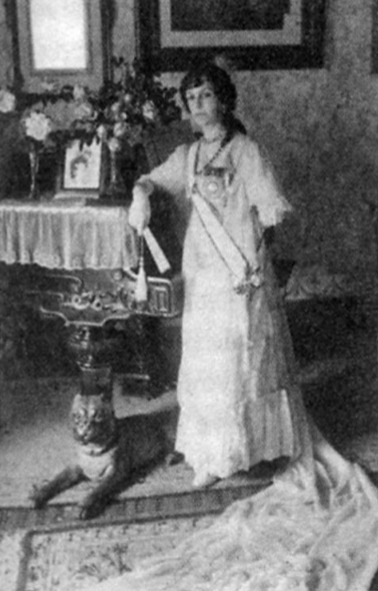
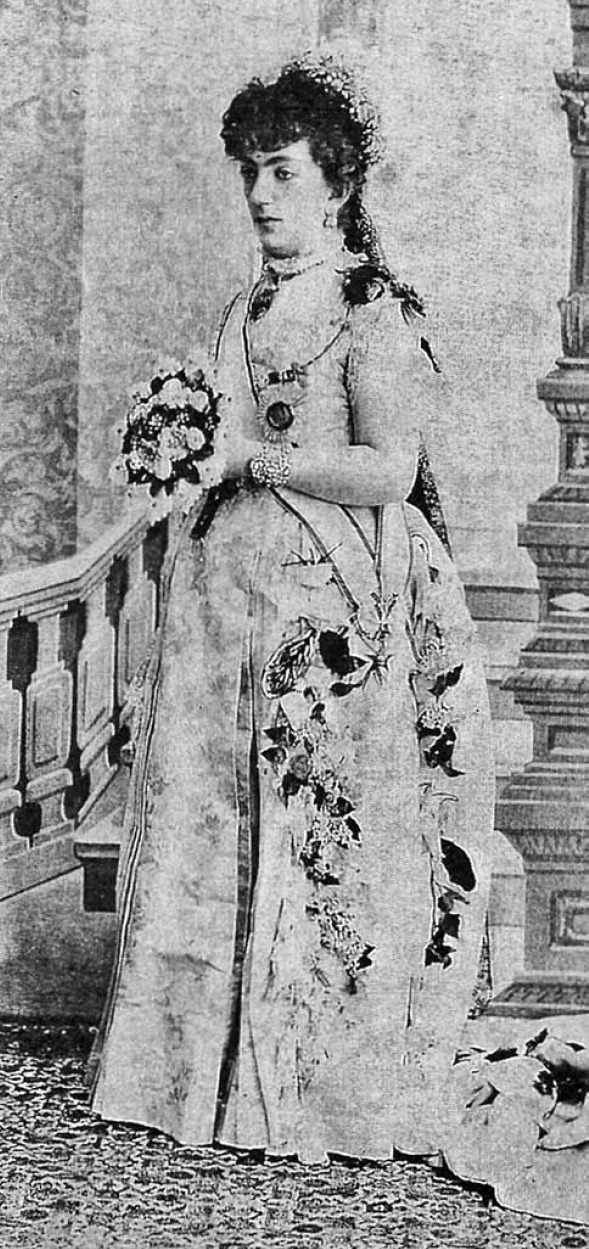
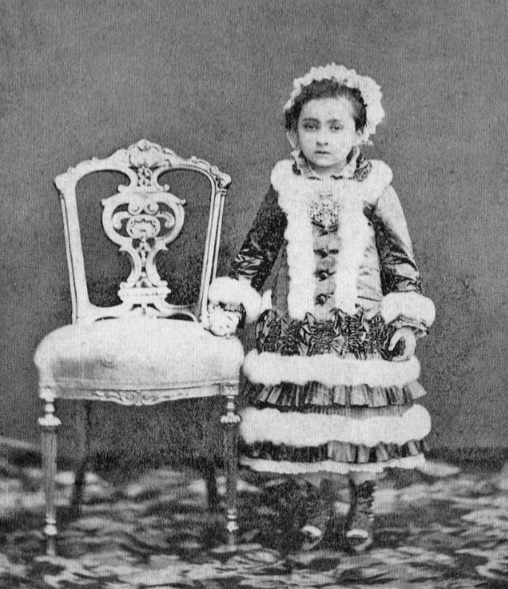





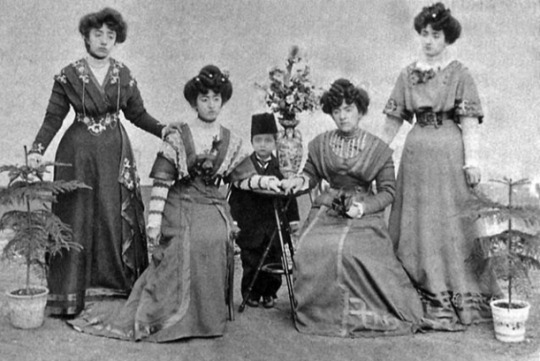
Photos from The Concubine, the Princess, and the Teacher: Voice from the Ottoman Harem
Princess Fatma, daughter of Abdülmecid I and half-sister of Murad V, around 1870 when she was thirty years of age. Photographer unknown.
Murad V’s daughter Princess Fehime in court dress with decorations and train, circa 1900. Photographer unknown.
Sultan Abdülhamid II’s half-sister Princess Mediha in court dress with train, circa 1885, when she was around age thirty. Photographer unknown.
Abdülhamid II’s “Accession Daughter” Princess Naime, so called because she was born when he came to the throne, at around age seven in 1882. Photographer: Kargopoulo.
Sultan Abdülaziz’s daughter Princess Nâzıma as a young lady of about ten, circa 1876. Photographer: Kargopoulo.
Princess Saliha as a young girl of eleven, in 1873, during the reign of her father, Sultan Abdülaziz. Photographer: Abdullah Frères.
Sultan Mehmed V Reşad’s grandchildren (left to right) Princess Dürriye, Prince Nazım, and Princess Rukiye, the children of Prince Ziyaeddin and the lady Ünsiyar, in 1915, the year they began instruction with the schoolteacher Safiye. Photographer unknown.
Princess Ayşe, Abdulhamid II’s daughter, at age twelve, around 1899. Photographer unknown.
Sultan Mehmed V Reşad’s consort the lady Mihrengiz, mother of his son Prince Ömer Hilmi, around 1910 when she was approximately forty years of age. Photographer unknown.
Murad V’s granddaughters (left to right): the Princesses Âdile, Rukiye, Behiye, and Atiye. In the center is his great-grandson Prince Vasıb. Circa 1907, after their release from confinement in Çırağan Palace. Photographer unknown.
#history#ottoman photos#fatma sultan daughter of abdulmecid i#fehime sultan daughter of murad v#mediha sultan daughter of abdulmecid i#naime sultan daughter of abdulhamid ii#nazima sultan daughter of abdulaziz#saliha sultan daughter of abdulaziz#ayse sultan daughter of abdulhamid ii#mihrengiz kadin
104 notes
·
View notes